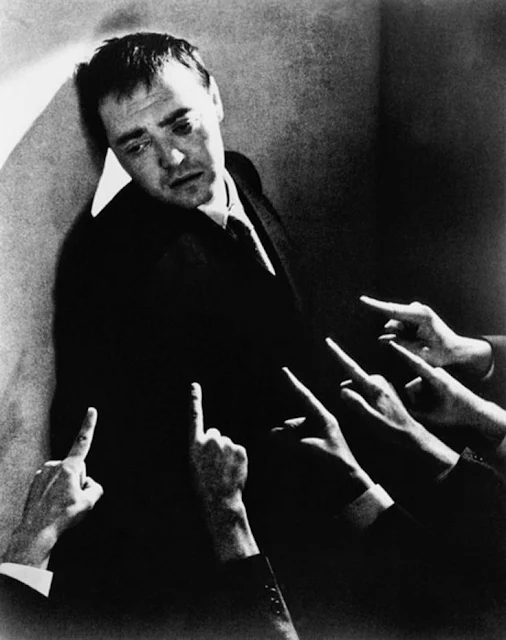Korean horror
Seeing some of these recent Korean horror films, one can come to an unpleasant conclusion: the long shadow of Hideo Nakata's Ringu (1998) reaches across countries even into Korea, and haunts us even unto today, some twelve years later, like an unending videotape curse. Nakata himself has struggled to distinguish himself and does so most successfully when he takes a tangential tack: either by creating a clever variation (Dark Water, 2002, which took the water motif to an urban-apartment extreme--you'll never look at tap water the same way again--and was piercingly poignant to boot), or by doing an effective sequel-remake (The Ring Two, 2005--where Nakata took state-of-the-art digital effects and a somewhat logical, somewhat linearly-told script, and showed us what a real filmmaker could do) .
Other than that it's been long-haired ghosts dripping their black, wet locks on us all the time, and perhaps the only way to keep us interested, or at least awake and watching, is to point out where the pictures aspire to do more. Ahn Sang-hoon's Arang (2006) promises to deliver on the overfamiliar, with a plot turning on a ratty-haired ghost of a girl (don't they have conditioner in the afterlife?) who has been raped by three, maybe four men (the number becomes important at one point). Think Ringu meets The Bride Wore Black, only with supernatural payback, that ubiquitous long black hair, and some startlingly bloodshot eyes (don't they have Eye-Mo in the afterlife?).
What makes the picture somewhat if not completely different is the bit from The Silence of the Lambs thrown in. Detective So-yung (Song Yoon-ah) becomes obsessed with solving this string of murders, and it turns out she herself is carrying a bit of psychic baggage, having more than the usual reason to identify with the grudging spirit. The picture's best scenes involve the detective and her partner Hyun ki (Lee Dong-wook), formerly from Forensics, debating on the subject of corpses, poisons, and the ability of various chemicals to induce heart attacks. So-yung is herself engaging; being a victim of assault herself, she's driven by more than just professional pride in seeing justice done.
The picture's distinguished by all the opportunities missed. I'd like to have seen more of this conflict between the cop's personal psyche and her ethics--what does it feel like, trying to save a bunch of rapists when you have more in common with the psycho-killer victim? Was So-yung abusing her police powers when she kept an eye out for any and all male suspects who fitted the description of her assailant? And I'd love to have seen more of a discussion on the peculiar properties of salt--the way it draws moisture out of a body; the way it kills bacteria, lay waste to a landscape, rendering it utterly incapable of growing even a blade of grass--the ultimate antiseptic.
Kim Yong-gyun's The Red Shoes (2006) for at least the first half looks poised to successfully break away from the Ringu pack. It has a superbly creepy opening--a subway station, with a young girl tentatively approaching a pair of shoes (actually they're pink, and if what I've read is right the original title calls them pink, but who cares, really?). The poor girl asks herself: who left them? Why leave them? Can she just take them?
Yong-gyun possess real visual flair, one distinct enough to deftly sidestep all the J-horror cliches. He knows when to use silence, and when to cut away to a long shot, revealing wide open spaces that mange somehow to increase one's sense of vulnerability--make one feel like a bug on glass, being closely (if quietly) observed. More, the film's shaping up to become a terrific psychological thriller--is the mother Sun-jae (Kim Hye-su) really being cursed by a pair of pink shoes, or is she and her eight-year-old daughter suffering the effects of a traumatic divorce? All the horrific images that follow--the cracking apartment ceiling, the sudden appearances (and disappearances), the blood gushing out from between the legs--could all be ascribed to maternal anxieties about a daughter's budding sexuality, and to a possible mother-daughter rivalry. It's all very unsettling, not just because it seems freshly wrought and inventive, but also because it seems so startlingly familiar; anyone who has gone through marital troubles and moved out of the house--temporarily or permanently, it doesn't really matter--know what she and her child are going through.
All the more frustrating, then, when the plot tries to heap one surprise twist too many. The movie begins to unravel, and like roaches laying siege to a crumbling home the cliches start scampering through the cracks--pale girls with long black hair, hallways with sputtering fluorescent bulbs, the by-now tiresome shadowy figure standing in a dark corner (Kurosawa Kiyoshi took this same creature and in Pulse (2001) turned it into an image of vague existential dread--you knew the figure was frightening, but you couldn't quite say why). Yong-gyun keeps pushing, pushing, pushing; for moments at a time you think he's about to pull a de Palma and somehow land on his feet, and in fact there are images here that are uniquely disturbing (Sun-jae at times looking as frightening as the wraiths pursuing her; the ballet re-telling of the Red Shoes legend and its at times scary intensity; the way Sun-jae keeps running and running and running, and ends up on the very subway station that opens the picture). It's enough to make one conscious of a new kind of suspense happening in these recent films--the suspense of a filmmaker of promise walking the tightrope between confusing novelty and overfamiliarity, and doing his best to keep his balance. Does Yong-gyun make it, or doesn't he? One waits, with bated breath, to find out.






